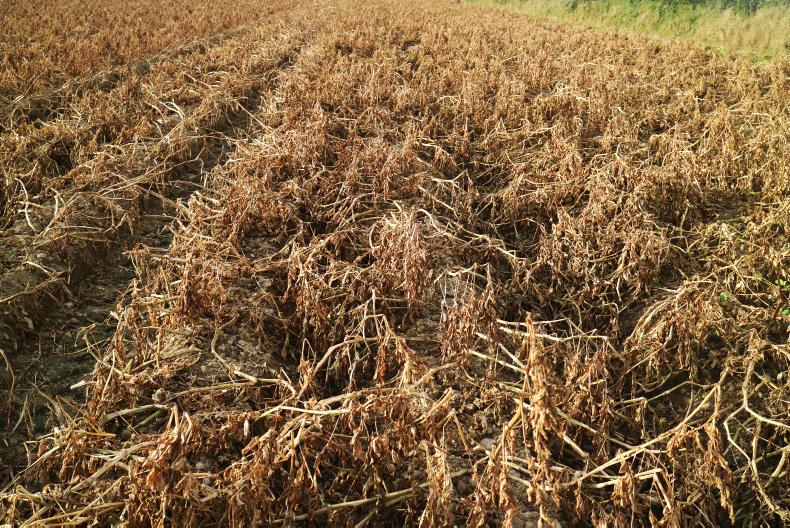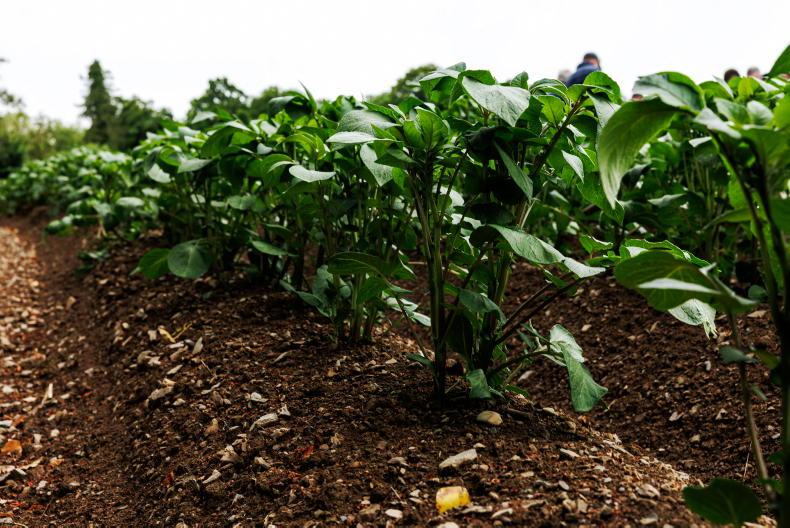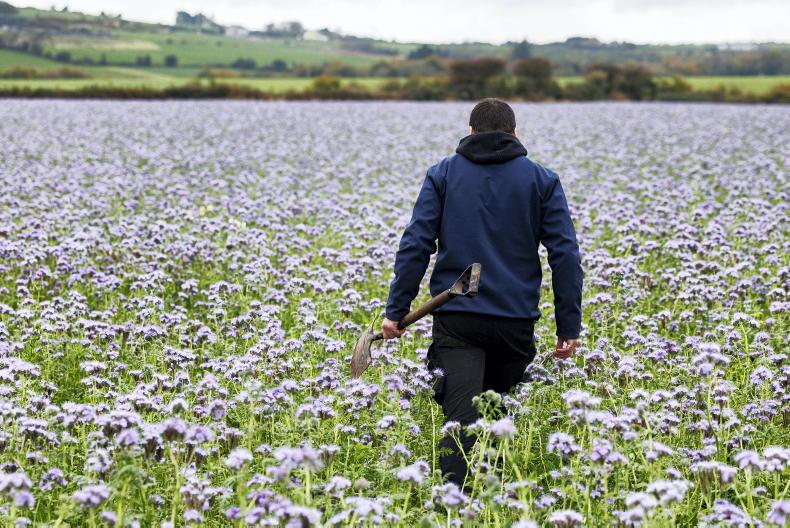From 4 February this year, the use of the plant desiccant active diquat is no longer allowed. This will pose a significant challenge for potato growers this season.
In a workshop at the National Tillage Conference held on Tuesday, growers expressed their concern at the loss of the active. Diquat has for many growers formed the mainstay active in potato desiccation for decades.
As well as helping to stop potato bulking to optimise the marketable yield, diquat is also important for skin-set and stolon separation, reducing late blight infection and virus spread, weed control and ease of harvest.

Reglone was a commonly used potato dessicant.
There are no options on the market to destroy potato haulms which are as effective as diquat and chemical alternatives are limited.
Teagasc tillage specialist Shay Phelan explained to attendees at a workshop that haulm desiccation will now involve the development of a well thought-out strategy.
This will likely involve a combination of careful potato variety and site selection, nitrogen management, mechanical haulm desiccation and the use of chemical alternatives.
Chemical alternatives
The active carfentrazone-ethyl is the main active in the desiccant spray Spotlight-Plus. The active can be used as a potato desiccant, but has a number of pros and cons.
Pros: The product can be effective in the destruction of potato stems and there is no risk of translocation into the tubers. There is also no problem in applying the product in dry weather.
Cons: The product is much slower-acting when compared with diquat and is weak in the destruction of leaves.
The product will likely be most effective when used in conjunction with trace elements, Ranman Top or as part of a haulm topping programme.
Haulm topping
Haulm topping is the mechanical destruction of potato haulms using flails. The destruction method has a number of pros and cons:
Pros: Haulm topping is fast-acting and removes leaves immediately. As a result, it stops growth quickly.
Cons: Haulm topping is slow work and needs good ground conditions. There is a risk that disease can be spread in crops and will likely require a fungicide post-destruction. Even haulm destruction can be a challenge and crows can also be problematic.
Other potential haulm destruction options include haulm pullers, the use of salts, electrocution and nutrient toxicity.
Read more
Potato harvest progresses but worry as Diquat banned
From 4 February this year, the use of the plant desiccant active diquat is no longer allowed. This will pose a significant challenge for potato growers this season.
In a workshop at the National Tillage Conference held on Tuesday, growers expressed their concern at the loss of the active. Diquat has for many growers formed the mainstay active in potato desiccation for decades.
As well as helping to stop potato bulking to optimise the marketable yield, diquat is also important for skin-set and stolon separation, reducing late blight infection and virus spread, weed control and ease of harvest.

Reglone was a commonly used potato dessicant.
There are no options on the market to destroy potato haulms which are as effective as diquat and chemical alternatives are limited.
Teagasc tillage specialist Shay Phelan explained to attendees at a workshop that haulm desiccation will now involve the development of a well thought-out strategy.
This will likely involve a combination of careful potato variety and site selection, nitrogen management, mechanical haulm desiccation and the use of chemical alternatives.
Chemical alternatives
The active carfentrazone-ethyl is the main active in the desiccant spray Spotlight-Plus. The active can be used as a potato desiccant, but has a number of pros and cons.
Pros: The product can be effective in the destruction of potato stems and there is no risk of translocation into the tubers. There is also no problem in applying the product in dry weather.
Cons: The product is much slower-acting when compared with diquat and is weak in the destruction of leaves.
The product will likely be most effective when used in conjunction with trace elements, Ranman Top or as part of a haulm topping programme.
Haulm topping
Haulm topping is the mechanical destruction of potato haulms using flails. The destruction method has a number of pros and cons:
Pros: Haulm topping is fast-acting and removes leaves immediately. As a result, it stops growth quickly.
Cons: Haulm topping is slow work and needs good ground conditions. There is a risk that disease can be spread in crops and will likely require a fungicide post-destruction. Even haulm destruction can be a challenge and crows can also be problematic.
Other potential haulm destruction options include haulm pullers, the use of salts, electrocution and nutrient toxicity.
Read more
Potato harvest progresses but worry as Diquat banned










SHARING OPTIONS